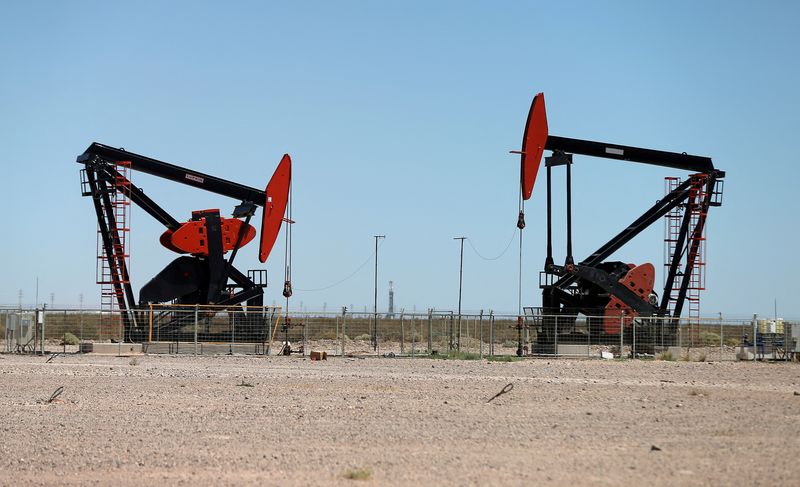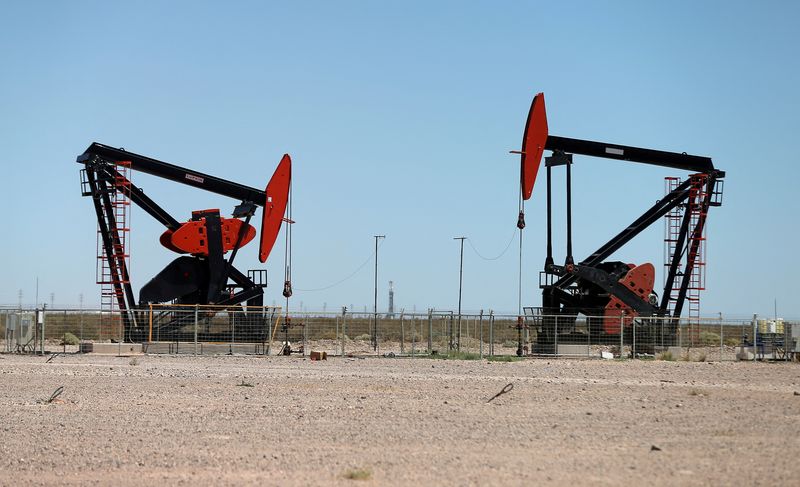Commodities
Oil prices set for 10% weekly rise as Middle East tensions heat up

By Ahmad Ghaddar and Arunima Kumar
LONDON (Reuters) -Oil prices rose sharply on Friday, and were on track for 10% weekly gains as investors weighed the prospect of a wider Middle East conflict disrupting crude flows after President Biden said the US was discussing an Israeli attack on Iranian oil facilities.
futures were up $1.09, or 1.4%, at $78.71 a barrel, as of 1120 GMT. U.S. West Texas Intermediate crude futures were up $1.08, also 1.5%, at $74.79 a barrel.
“While Iran has ‘saved face’ by its rocket attack on Israel on Tuesday, fears are growing that Israel might target Iranian oil infrastructure under its response, which could provoke further retaliation dragging neighbouring states into the conflict,” Panmure Gordon analyst Ashley Kelty said.
The U.S. is discussing whether it would support Israel strikes on Iran’s oil facilities as retaliation for Tehran’s missile attack on Israel, President Joe Biden said on Thursday, while Israel’s military hit Beirut with new airstrikes in its battle against Lebanese armed group Hezbollah. Biden said later in the day on Thursday he would not negotiate in public when asked if he had urged Israel not to attack Iran’s oil facilities.
Biden’s comments contributed to a 5% rally in oil prices on Thursday, as Israel weighs its options after arch-foe Iran launched its largest-ever assault on Tuesday.
“The market had already had a substantial amount of short positioning and low amounts of net length in the market – leaving the market prone to price spikes higher,” StoneX analyst Alex Hodes said.
Concerns over oil supply that drove up prices earlier in the week have also been tempered by OPEC’s spare production capacity and the fact that global crude supplies have yet to be disrupted by the Middle East unrest.

Meanwhile, Libya’s eastern-based government and Tripoli-based National Oil Corp announced on Thursday the reopening of all oilfields and export terminals after a dispute over leadership of the central bank was resolved, ending a crisis that had heavily reduced oil production.
This would allow the country to more than double its production levels, restoring them to about 1.2 million bpd.
Commodities
Oil prices rise; U.S. crude inventories plunge, Russia-Ukraine truce eyed
Commodities
India’s Reliance to stop buying Venezuelan oil over US tariffs, sources say
Commodities
Oil prices climb on Venezuela supply worries

 Forex3 years ago
Forex3 years agoForex Today: the dollar is gaining strength amid gloomy sentiment at the start of the Fed’s week

 Forex3 years ago
Forex3 years agoUnbiased review of Pocket Option broker

 Forex3 years ago
Forex3 years agoDollar to pound sterling exchange rate today: Pound plummeted to its lowest since 1985

 Forex3 years ago
Forex3 years agoHow is the Australian dollar doing today?

 Cryptocurrency3 years ago
Cryptocurrency3 years agoWhat happened in the crypto market – current events today

 World3 years ago
World3 years agoWhy are modern video games an art form?

 Commodities3 years ago
Commodities3 years agoCopper continues to fall in price on expectations of lower demand in China

 Economy3 years ago
Economy3 years agoCrude oil tankers double in price due to EU anti-Russian sanctions























